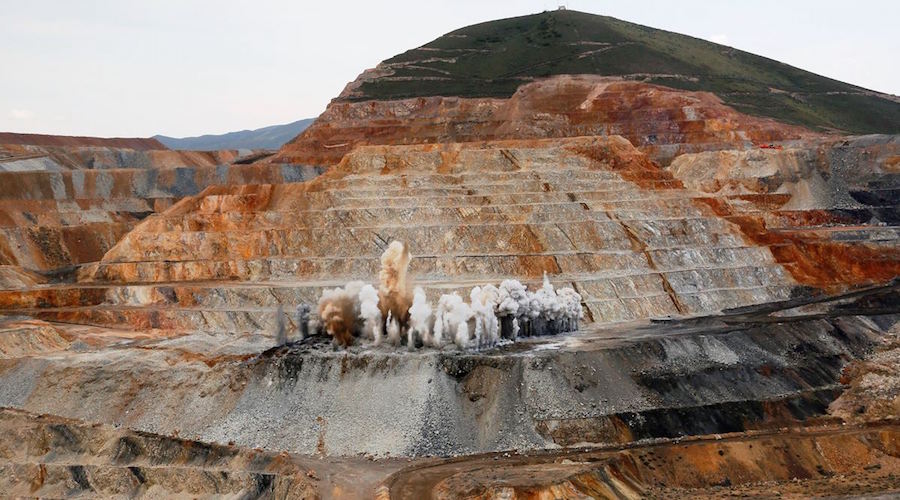
Marijuana companies have mesmerized retail investors, depriving the mining sector of the risk capital that’s typically been its “lifeblood.” But two mega-deals and a dramatic hostile battle in the gold space may finally give moribund mining stocks a shot in the arm.
That’s the basic position of TD Securities mining investment bankers, who say current market conditions and historical precedents make them optimistic generalist investors will return in greater numbers to mining stocks.
“Consolidation will reinvigorate investors’ interest in the sector,” Michael Faralla, head of global mining for TD Securities, said in an interview at Bloomberg’s office in Toronto. “They’ll see that as being a good thing to create stronger companies.”
The current market is reminiscent of the late 90’s and early 2000’s.
Retail investors have historically held 15 percent of most mining equities, driving their liquidity, TD Securities’ Deputy Chairman Rick McCreary said in the same interview. However, “we have seen all those sorts of liquidity of trading go into the cannabis side.”
Financing within the global mining sector had been on a bumpy decline since 2009, reaching a 12-year low in 2018, according to data compiled by Bloomberg. But speculative money, which has typically fueled the sector, will start to return as consolidation ramps up, according to Faralla.
Deal talk and financing were certainly hot topics at the BMO Metals & Mining Conference in Florida last week, and will likely dominate the massive Prospectors & Developers Association of Canada conference in Toronto March 3-6.
Top of mind is the fray in the gold space. In September, industry leader Barrick Gold Corp. agreed to buy Randgold Resources Ltd. for $5.4 billion. Three months later, its long-time rival Newmont Mining Corp. announced a plan to purchase Goldcorp Inc. for $10 billion, which would leapfrog it into the leading gold-producer spot. The latter deal was thrown into question last week when Barrick announced a $17.8 billion hostile bid for Newmont.
The current market is reminiscent of the late 90’s and early 2000’s, McCreary says. At the time, investors had low interest in mining, and companies found it hard to raise capital. That was followed by waves of consolidation and a mining bull run, he says. A similar trend may be building as this “period of consolidation” rolls on.
“Mining equities are driven by momentum,” McCreary said. “It’s not the absolute price that’s important; which way it’s going is important.”
Mergers probably won’t benefit all companies equally. Mega-deals would certainly create better liquidity, and that will give the giants better access to funding, according to Randy Smallwood, chief executive officer of Wheaton Precious Metals Corp. That could be a negative for alternative-funding sources, such as the streaming and royalty companies, he says.
On the upside for streaming companies like his, the big transactions should lead to asset divestitures, in which case buyers will require funding such as streaming deals to fund purchases.
Still, more deals are needed in the current market to pique the interest of generalist investors, who aren’t keen on companies that operate or develop single-asset projects, McCreary said. Once those assets start getting put together, generalists will buy in.
Investors shouldn’t expect that lofty premiums will be the norm going forward. As in the nil-premium Barrick-Randgold deal, the “industry is saying, you know, maybe we don’t have to do such high-premium deals in order to do something that makes sense,” Faralla said in the interview, conducted before Barrick’s bid for Newmont was announced.
Good combinations will create value for shareholders in the longer term, he said. “People will be more open to doing lower-premium deals where you’re bringing two companies together and both continue to benefit,” Faralla said.
(Reporting by Aoyon Ashraf).